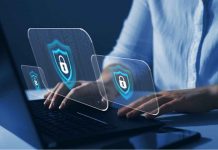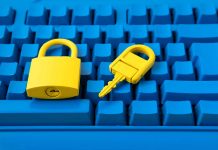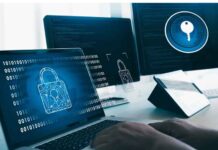Over the past few years, the InfoSec community has witnessed a rise in cyber risks and attacks in the education sector. This surge is especially seen within higher education. Several factors contribute to the prevalence of these attacks. However, inadequate funding and lack of adequate security coverage are major contributors.
Cybercriminals aren’t going to exclude educational institutions, even though they’ve faced enormous challenges, including the pandemic’s effects, a lack of financing, and a lack of employees.
Specifically, ransomware has emerged as a problem in the education sector. Ransomware attacks have forced certain institutions to take down and rebuild systems to prevent assaults that could endanger students.
Below, you will find a list by an academic writer from a top paper writing service, which students use to write my assignment for me and boost their grades, of the most prevalent cybersecurity attacks in the education sector. But first, let’s define a cybersecurity threat.
What is a cybersecurity threat?
The potential for an adversary to gain unauthorized access to data, disrupt digital processes or cause information damage is considered a cybersecurity threat.
Some examples of those who could pose a threat include:
- Corporate spies
- Terrorist groups
- Hacktivists
- Hostile nation-states
- Lone hackers
- Criminal organizations
- Disgruntled workers
There have been several high-profile cyber intrusions in recent years that have exposed valuable information.
For instance, in 2017, a data breach at Equifax exposed the names, birthdates, residences, and Social Security numbers of almost 143 million people. According to a company statement, almost 500 million customers’ personal information was compromised when hackers broke into Marriott International’s systems in 2018.
A lack of encryption, among other technological measures, allowed these cybersecurity threats to succeed in both cases. Professionals in the field of cybersecurity are indispensable in a world where hackers can use victims’ personal information to commit identity theft or access their financial records, among other crimes.
5 cyber threats all learning institutions need to be prepared for:
1. Phishing
Phishing is the root of nearly every cybersecurity problem. This strategy is employed when the target receives an email that looks legitimate but requests sensitive information. Emails of this nature sometimes seek confirmation of an existing account or permission to access or use private information such as login credentials.
For instance, a student looking to log into an academic writing help platform offering essay services by EssayHub or similar companies after reading essay writing services reviews online might have to provide certain information to verify their login details. And such an email can be sent by a scammer who poses as the said service.
Most people have had a poor experience with this kind of communication at some point in their lives. These deceptive emails can trick even the savviest people.
2. Human nature
One of the most dangerous cyber risks is, unfortunately, human nature. As in many other fields, sometimes human error is the reason behind a cybersecurity breach. Humans differ from machines because they aren’t infallible and factor in various factors while making choices.
In some instances, this may indicate that those in authority are not cyber-savvy.
The vast majority of today’s educators are already aware of the potential dangers of the World Wide Web. It would be disastrous if they ignored the risk posed by cyberattacks on educational institutions putting students at risk.
Anything from identity theft to monetary manipulation is possible. So, all faculty members must be cognizant of these dangers.
3. Ransomware
Files on a computer can be encrypted by ransomware, making them inaccessible to the user. Then, the hacker demands payment to allow access to the data. Most Internet-connected computers fall into this trap when users click on a malicious link or download a malicious file.
The malicious file typically contains routines that allow it to locate its intended victim’s files and encrypt them. Hence, ransomware can be used to encrypt the institution’s resources and contact details. That would keep the school from accessing critical students’ data and records.
4. Password attack
A password attack is any attempt to gain access to a system by discovering and then subsequently guessing the user’s password. Once an attacker has a user’s password, they can access sensitive information. They could also gain administrative access and make significant changes to the network.
When an attacker gathers information about a user and then uses that information to try to guess the password, they are attempting a targeted password attack.
Passwords obtained by criminals through leaked information or hacking are also on sale on the dark web. It’s a good practice to avoid reusing passwords.
5. Formjacking
Formjacking is a unique form of cyber threat. It involves stealing content or otherwise seizing control of a website, a serious crime. In this case, it’s because hackers have found a security hole. This cybercrime is often carried out to collect personal information, such as credit card numbers. Sometimes, criminals get away with their deeds because they enter and leave a website unnoticed.
Hackers view schools as easy targets because of the prevalence of personally identifiable information (PII).
Why is education a target for cybercrime?
Information about students is the most valuable asset to secure in online school systems.
School security threats often mirror those experienced by businesses. Nonetheless, the education sector faces unique dangers due to its work with young people. The most pressing issue is that K-12 school children have less experience with and knowledge of school cybersecurity than most adult employees.
DDoS (distributed denial of service) assaults are becoming less common as schools transition to e-learning market providers.
Still, attacks initiated by amateurs, such as students who want to avoid attending classes, should not get a pass. It is still possible for these platforms to be compromised by freely available attack tools that might halt e-learning for days.
Conclusion
A significant benefit of modern technology is increased access to online learning. It provides students with the same high-quality experience and outcomes as traditional classroom settings.
Teachers, parents, and kids need the tools to safeguard their devices and data. This is as cybercriminals continue exploiting gaps and bringing new threats and vulnerabilities.







